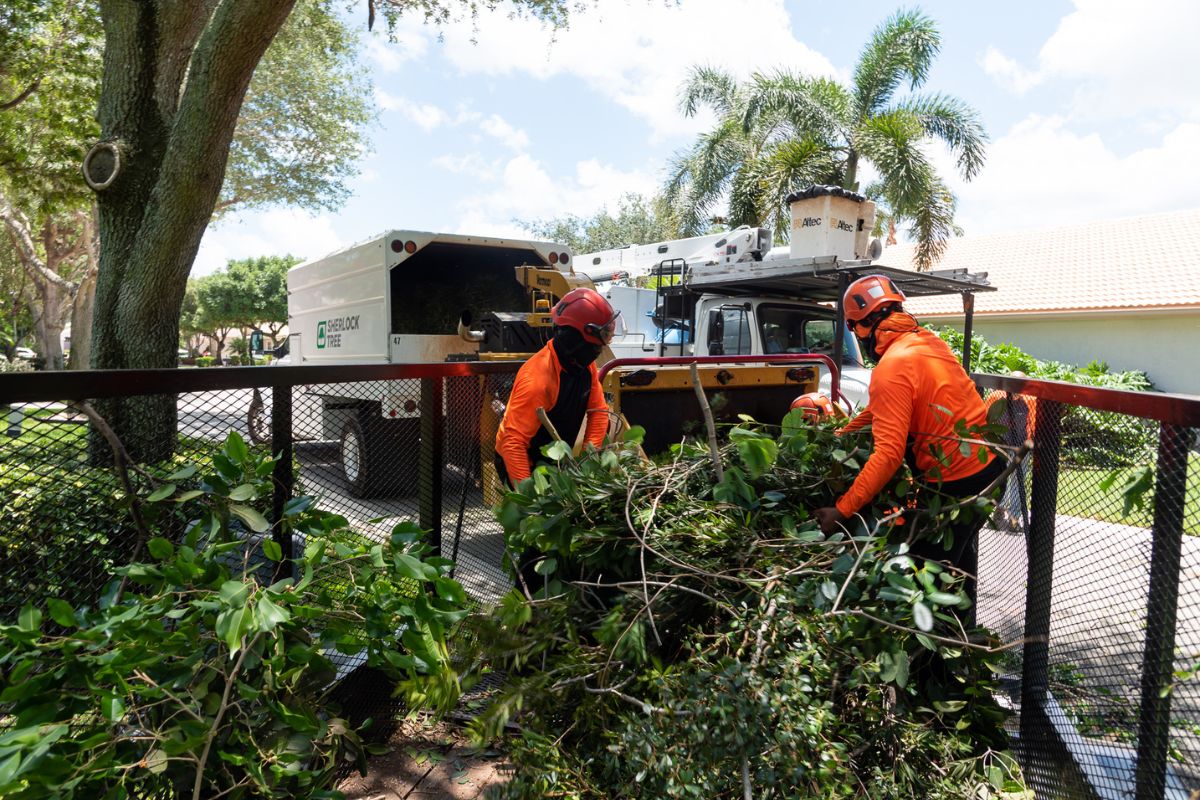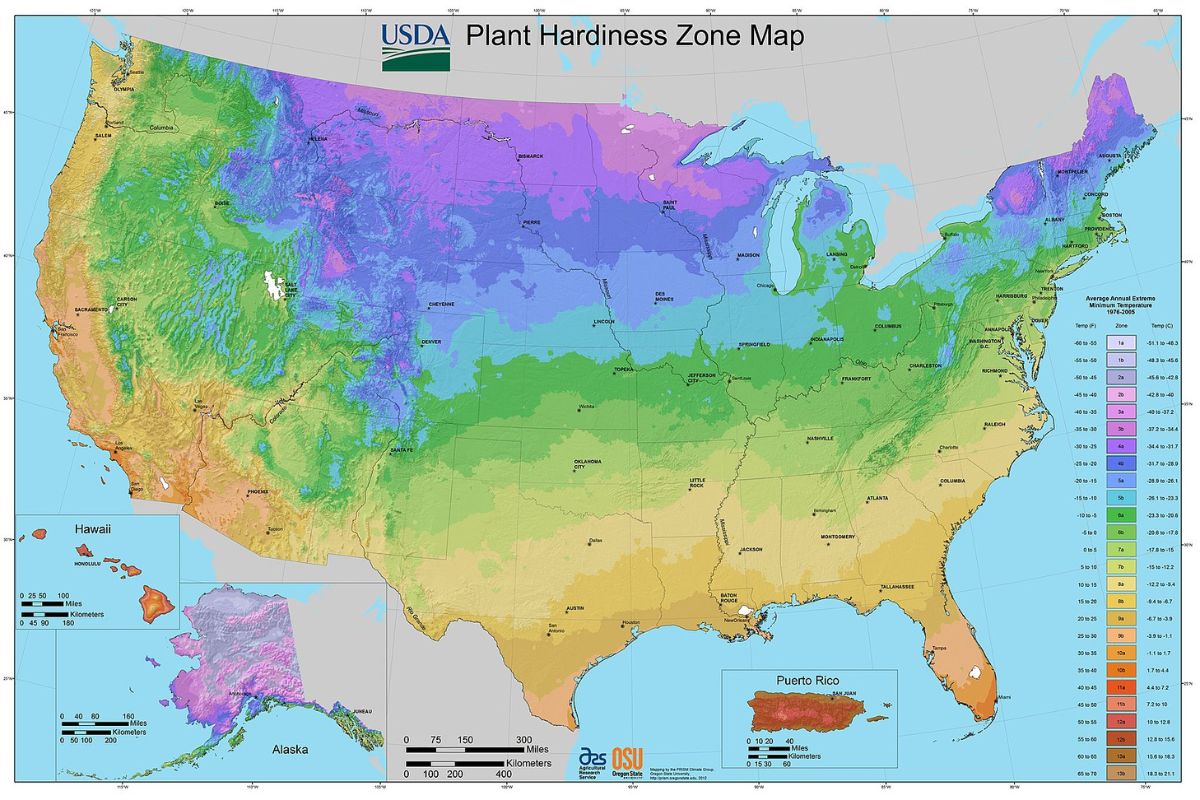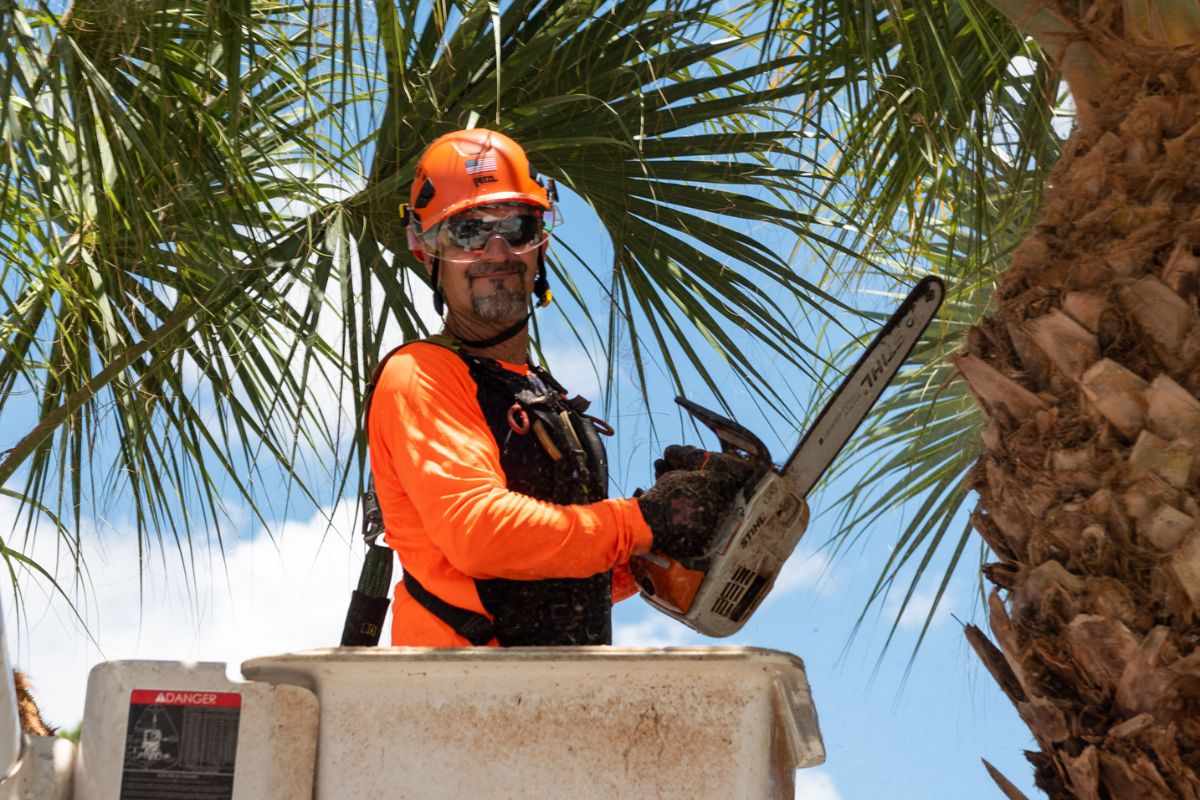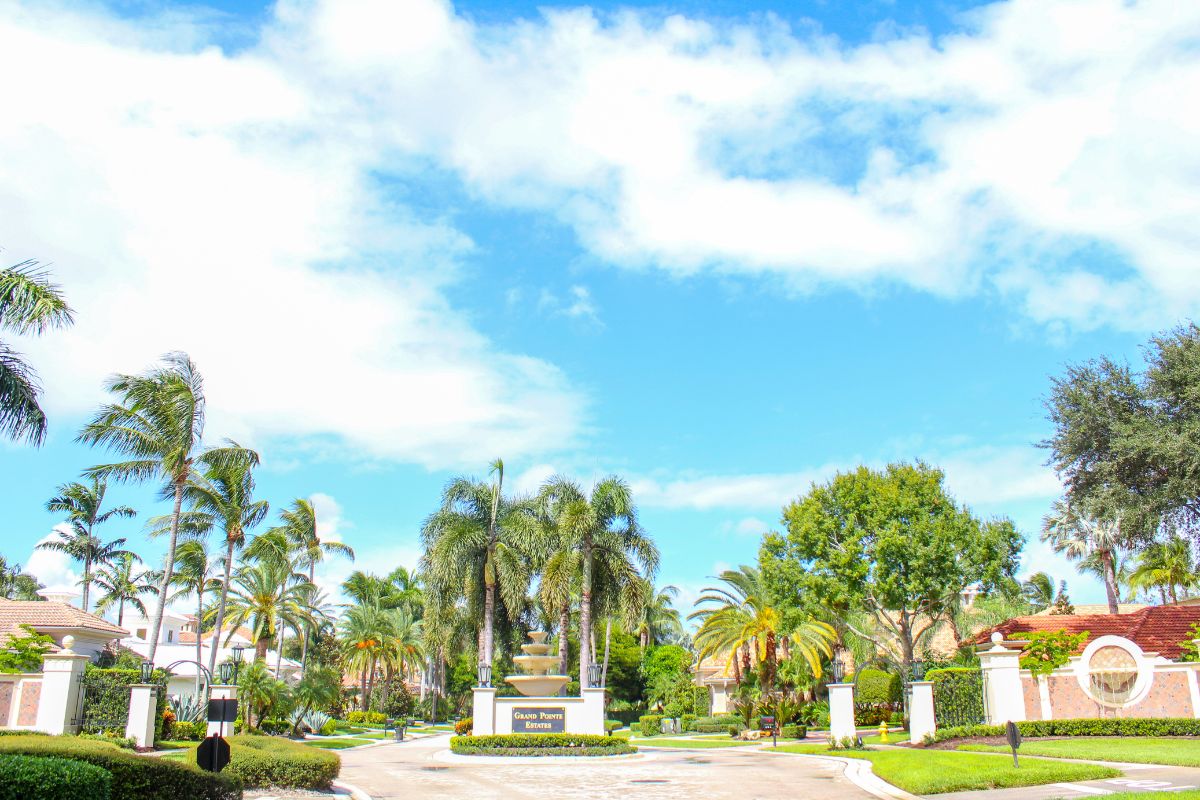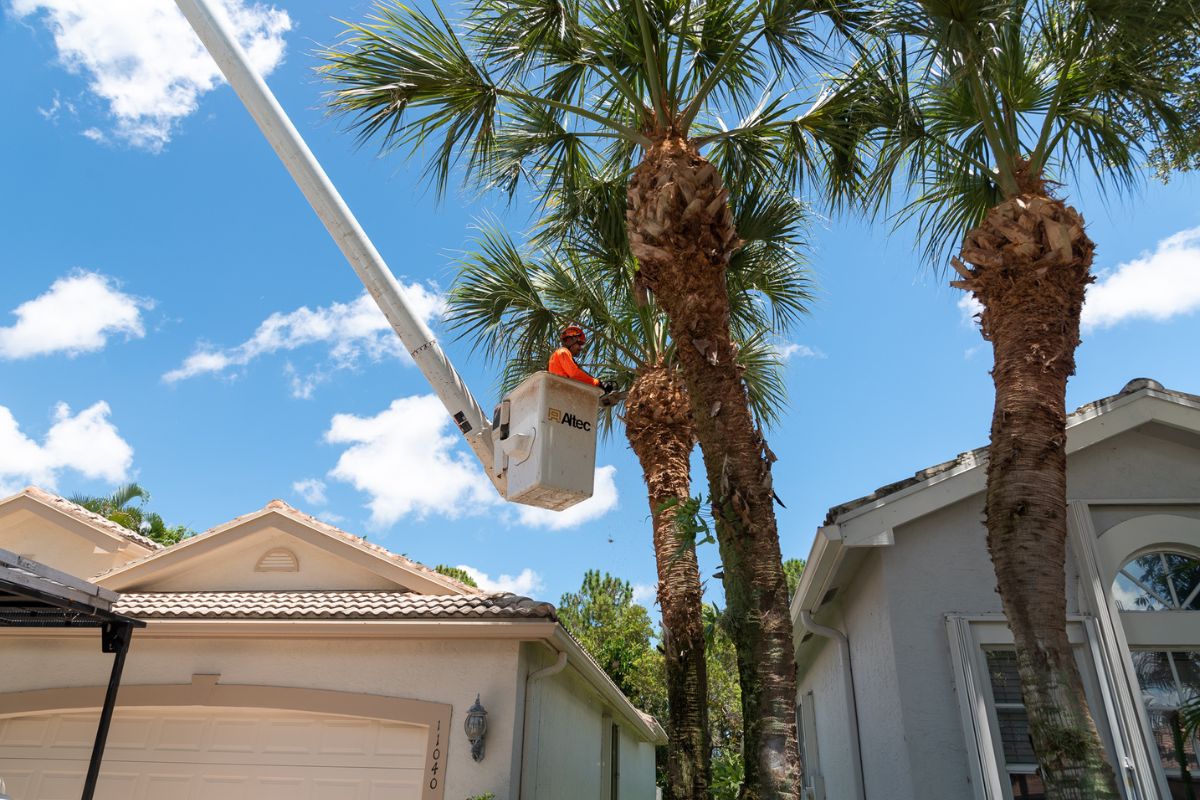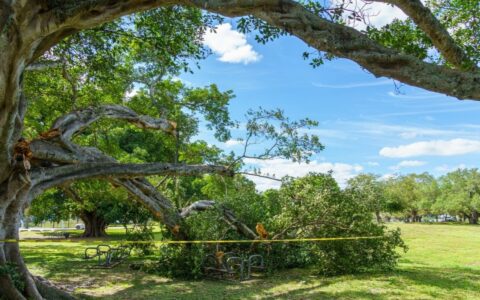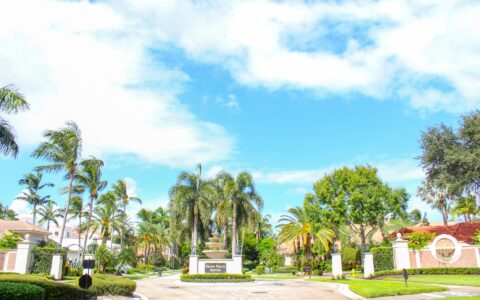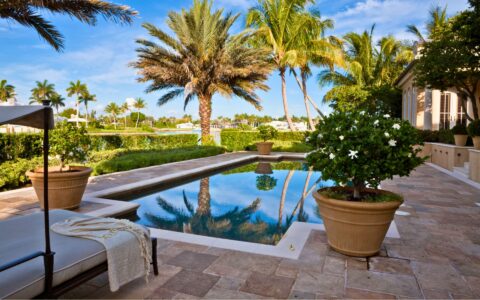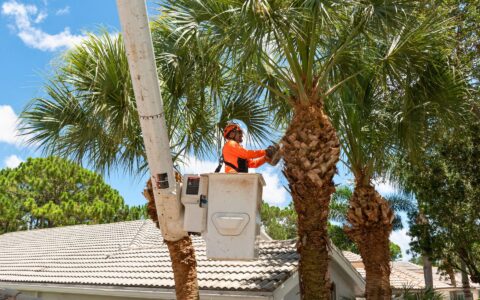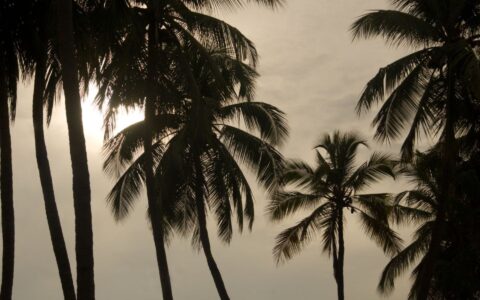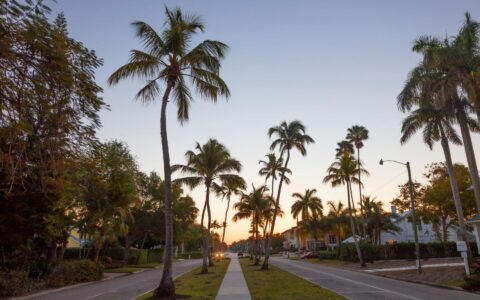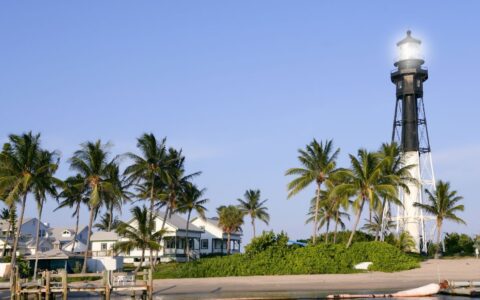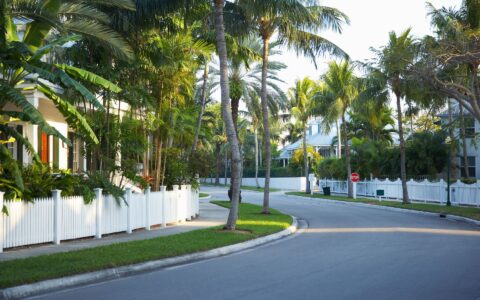Living in South Florida year-round means that you can schedule your tree work at any time, depending on what your landscape needs when, but what about when you are one of the part-time residents of Florida?
In this article, we’ll cover what South Florida’s part-time residents should ensure is done for their trees when they are residing at their Florida home.
Keep reading to learn the tasks that we recommend you complete (or hire someone to complete) on your South Florida property.
Check For Any Tree or Palm Issues
One of the first things to do is to look over your property and landscape and check for any immediate issues. Look for cracking branches, peeling bark, signs of pests or disease, dying fronds or leaves, salt damage, or any structural issues on your trees and palms.
Many trees can be difficult to access, and we don’t want anyone climbing dangerous ladders to get a look at their trees, so we recommend scheduling a tree inspection. Sherlock Tree has the skills, knowledge, and equipment needed to properly access and assess your trees and landscape.
Schedule a property inspection >>
Schedule Tree Pruning and Trimming
Many trees and palms benefit from regular maintenance pruning. We can ensure that trees aren’t brushing up against the roof, that all pedestrian walkways are clear, and that any broken or cracked branches are removed before they cause any damage.
Maintenance pruning is especially helpful if you’re concerned that the tree may break or drop branches during a strong storm or wind.
If you have any crapemyrtles, scheduling professional pruning also ensures that you aren’t accused of committing “crape murder,” a type of pruning that can ruin crapemyrtles.
Learn more about Sherlock Tree’s Pruning and Trimming services >>
Remove any Dead or Dying Trees
If it is clear that one or more of your trees are not salvageable, you should schedule them for tree removal as soon as possible. For the same reason, that cracked trees can be dangerous in a storm, dead or dying trees are less steady than healthy trees and can topple from a strong wind or when the ground becomes oversaturated.
Learn More about Sherlock Tree’s Tree Removal Services >>
Understand South Florida’s Climate and Growing Seasons
Most of South Florida is considered zone 10 or 11 in the USDA Hardiness Zone Map. When moving or visiting from a different climate and growing zones, we recommend learning what is considered the growing season, which plants are native to our area, and more.
The sun in South Florida is different from other areas of the country and world, and the summers can be brutally hot. Ensure that any plants or trees you add to your property will last year-round in this climate.
If you plan on planting a garden, many crops that are grown during the spring or summer in the Northern United States are grown from the fall through spring in South Florida.
How winter weather impacts South Florida Trees and Landscapes >>
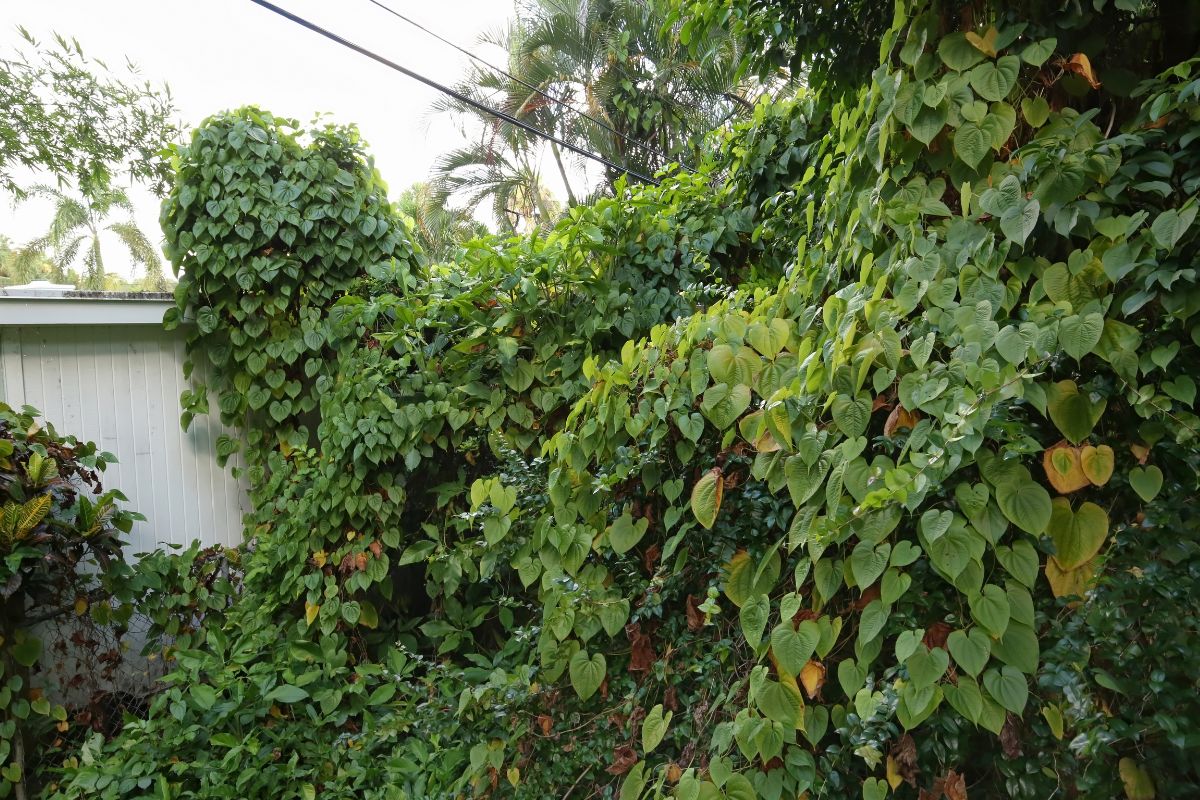
Air potato vines are invasive in South Florida.
Learn about South Florida’s Native and Invasive Plants
When you move to South Florida from a different climate, it can be tempting to grow plants and trees that you are familiar with. However, planting native is always the best option, as plants and trees native to our area help our wildlife, benefit the local ecosystem, and prevent some invasive pest infestations.
Speaking of invasives, it is also helpful to know which plants, trees, vines, and grasses are deemed invasive in South Florida. Knowing and recognizing invasives can help you spot them on your own property and ensures that you aren’t accidentally buying or planting something that is prohibited in our area. Some plants that are popular in more northern climates may be deemed noxious or invasive in South Florida.
Planting native plants and trees is much more beneficial than non-natives, and planting invasives can only lead to problems in the future.
How to Choose the Best Tree for Your South Florida Property >>
Water and Mulch When Necessary
Organic mulch can be beneficial around plants and trees because it regulates soil temperature, adds nutrients to the soil, prevents runoff, and increases moisture levels.
Due to its organic nature, however, it needs to be replenished over time.
Many South Florida homes have irrigation systems to ensure plants or lawns are being watered year-round, so check that the irrigation system is working properly. Check for any leaks, check that rain sensors are working (to prevent overwatering and runoff), and change the watering schedule if needed.
If you don’t have an irrigation system, most trees and plants will benefit from deep watering, especially if there hasn’t been any rainfall recently.
South Florida’s rainy season runs from mid-May through mid-October, and mid-October through mid-May are typically drier. However, this can vary from year to year and tropical storms can cause rain and flooding during the “dry” season. Planning for these differences can help your landscape survive rainy or dry seasons.
Finally, know your area’s water restrictions and be sure to follow them.
Part-Time Resident’s Water Conservation Checklist from UF/IFAS Extension >>
Check Your Trees for Pests and Diseases
Trees, shrubs, and plants can succumb to a variety of insect pests or tree diseases. Check for any signs of pests or diseases on your property. If any of your trees are susceptible to a disease or pests, use preventative treatments when available. If any are currently fighting an infestation, treat them when possible.
Learn about Sherlock Tree’s Insect & Disease Treatments >>
Be a Good Neighbor
When a property is left for months at a time, issues can pile up. Choosing low-maintenance plants and trees is one way to prevent some potential problems.
For instance, many lawns do well during South Florida’s summer months but go dormant during the winter. Some property owners choose to replace lawns with rocks, mulch, or other materials.
If you want to keep your lawn, schedule fertilization in the fall and early spring and make sure your irrigation system is set up properly and is working correctly.
When choosing fruit trees for your property, try to choose varieties where the fruit will be ready to harvest when you are in town. Falling, rotting fruit is not only unpleasant, it can attract rodents and other critters.
Many South Florida homes are in a neighborhood with a Homeowner’s Association. Depending on the HOA, they may be able to handle tree care and other tasks for you.
Tree Care in South Florida HOAs: What You Need to Know
For other landscape tasks, you might want to look into landscape maintenance companies (such as Dias Brothers).
Other Things to Keep in Mind
It may help to learn the “Florida-Friendly Landscaping” tips from the University of Florida Extension.
These tips on Florida Gardening for New Residents may also be helpful.
Contact Sherlock Tree For Assistance
Sherlock Tree Company can help keep your South Florida property healthy and well-maintained. Contact us for your tree service needs in Broward, Miami-Dade, or Palm Beach Counties. We have over 40 years of experience working with trees, plants, shrubs, and landscapes in South Florida.
Call Sherlock for quality tree services
Whether you're looking for specific tree care services, such as palm trimming, tree removal, or disease treatments, or would like one of our Arborists to examine your trees to identify any issues and recommend options, we're always here for you! Just give us a call at 954-788-4000 to set up an appointment.
SEE MORE ARTICLES
Looking for more?
We've got you covered with a monthly newsletter full of tips, resources, updates, how-to's, and other helpful information about trees and landscapes in South Florida!

